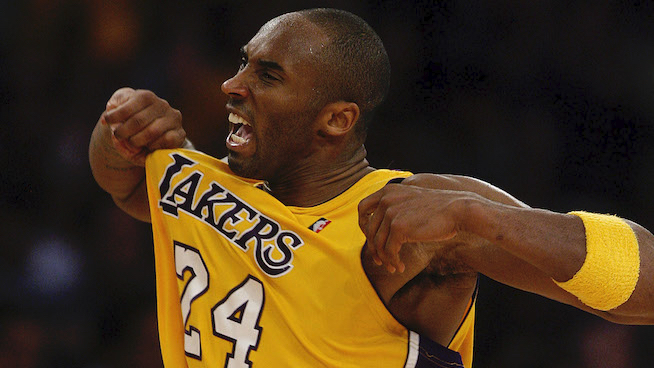Nothing captures the spirit of the recent onslaught of criticism and unease over CrossFit, an intense strength and conditioning program now enjoying global popularity, more than a line on the cover of Outside magazine’s December issue. With a tongue-in-cheek edge, the copy asks, Is CrossFit Destroying the World?
Outside’s story, which expressed concern over injury rates among CrossFitters, is hardly unique. ABC raised safety concerns about CrossFit Kids programs and CrossFit’s connection to rhabdomylosis, a potentially fatal condition associated with muscular breakdown. And traditional media outlets are not the only ones that are in on the act. CrossFit and rhabdomylosis also came under fire from Medium.com, a blog launched by Twitter founder Evan Williams, in a story entitled “CrossFit’s Dirty Little Secret,” which garnered enough attention to be featured on the Huffington Post.
The stories point out correctly that the number of people injured while performing CrossFit routines has increased. But what they don’t address in many cases is that the number of CrossFitters has blown up over the past few years. According to CrossFit HQ, at the beginning of 2007, there were 13 affiliate gyms, also known as boxes. In early 2012, there were 4,000. Since then, the number of boxes in operation is reportedly twice that number. Outside reports that the latest tally is around 10,000 boxes in the world. If the number of participants goes up, doesn’t it follow that the number of people getting injured would go up too?
Further, CrossFitters are adamant that their activity cannot be painted with broad strokes. Dr. Leon Chang, an M.D. at the University of California San Diego and co-owner of CrossFit Elysium in San Diego, says that CrossFit doesn’t lend itself to a simple, sound-bite type of definition.
“It’s an exercise methodology, almost a philosophy, that utilizes whole-body, functional movements and high intensity to elicit well-rounded physical fitness,” Chang says. “Calling CrossFit dangerous is like saying ‘vehicular transportation is dangerous’ or ‘physical activity is dangerous.’ Both are statements that might have some truth to them, but are woefully inadequate by themselves.”
Chang says that common sense goes a long way toward getting the benefits out of a CrossFit program while minimizing injury risk. His tips for athletes who want to do that?
1. Find the licensed CrossFit boxes in your area
Chang says the first step is to identify the legitimate, licensed boxes in your area and avoid the knock-offs. Check the official CrossFit map to obtain a list of boxes near you.
2. Narrow the list
“Inevitably, there will be some great affiliates and coaches out there, and some not so great ones,” Chang says. “In other words, be your own best advocate in selecting the best gym for you.” Talk to the coaches and get a feel for what they stand for. “Do they seem to generally care about your health and you as a person? Or do you simply represent another monthly check?”
3. What’s their plan?
When interviewing the coaches at a box, ask them about how they plan the workouts. “The coaches should be able to tell you why each workout is programmed, and what the overall training effect—both short term and long term—is intended to be,” Chang says. “If they can’t do that, they probably don’t know what they’re doing.”
4. Avoid chipper-obsessed boxes
Chang recommends steering clear of boxes that program 20-to-30-minute “cardio” conditioning workouts—sometimes called “chippers” because they include a large number of different exercises and take a long time to do—on a daily basis. “The vast majority of the workouts on their schedule should be in the 5- to 15-minute range and include 2-3 movements,” Chang says.
5. Strength is a strength
“Make sure there is a dedicated strength portion that shows up routinely in their programming,” Chang says, emphasizing how critical this is for beginners who lack the power and coordination that powerlifting and Olympic lifting can cultivate. Programming strength work and coaching strength moves are complex tasks, and if you find coaches who can do that, you’re probably in a good box. “Good affiliates recognize this and possess this skill set,” Chang says. “The bad ones don’t, because they don’t know how.”
6. Use proper mechanics with obsessive consistency
Your first priority as a new CrossFitter is to learn the proper mechanics of core CrossFit exercises. Intensity should only be introduced after you can demonstrate proper mechanics consistently. “A good affiliate or coach will know this, and their entire approach will reflect this mentality,” Chang says. In pursuing this objective, you will lower your risk of injury and build a foundation for greater performance down the road.
7. Develop intensity gradually
“A newcomer can’t handle what a seasoned veteran can,” Chang says. “Both can push hard, but hard will be relative to what each is capable of.” By introducing intensity gradually, you will virtually eliminate the risk of rhabdomylosis. (For more on how to eliminate the risk of rhabdo, read this entry in the CrossFit Journal.)
8. Take care of your body
An important aspect of a beginner’s training should be rest and recovery, not just grinding through WOD’s. “Newcomers will typically want to show up every day,” Chang says. “After all, they’re excited about their new program, they’re making gains and everything is great.” Temper your enthusiasm and allow your body to digest the high potency training that CrossFit delivers. “Recovery is how one actually benefits from exercise. The exercise is the stress your body adapts to, but the adaption requires rest and recovery. Don’t overdo it.” When considering whether to take a day off, err on the side of caution and take the day.
9. Be responsible
If the workout or movement seems too much, take responsibility and speak up. “No one is going to hold your hand for you,” says Chang. “If something seems dangerous, ask. If the explanation doesn’t satisfy you, at the end of the day, you are in control of your own life. No one is forcing you to do something potentially dangerous.” Chang adds that a sense of personal responsibility is crucial to everything you do in CrossFit. “If you know your mechanics aren’t great, yet you still push to failure in a workout and get hurt, whose fault is that? I would argue the coach’s and yours. If you’ve just learned to do Pull-Ups and a workout has 100 of them, and you do it and tear your hands badly, whose fault is that? The coach’s and yours. Newcomers and veterans alike need to take responsibility for their own choices and decisions.
10. Remember: There is no such thing as a perfectly safe activity
Chang says every method of training involves an element of risk. “Unfortunately, the only alternative is to be inactive, which is accompanied by our old pals heart disease, obesity and diabetes,” he says. “In my experience, most CrossFit participants see improvement or outright resolution of old injuries, and if they get new ones, they are usually minor and temporary. The expectation that one can be both physically active and yet forever injury-free is totally naive.”
Read more:





